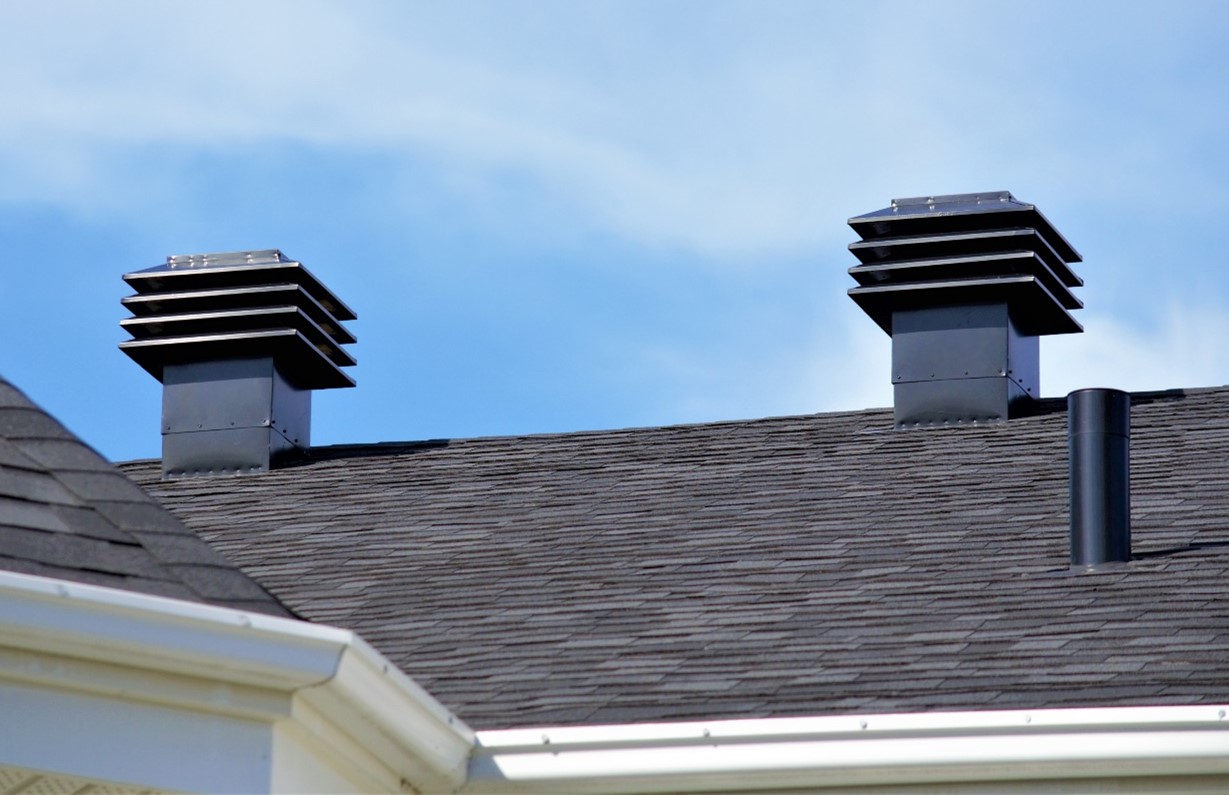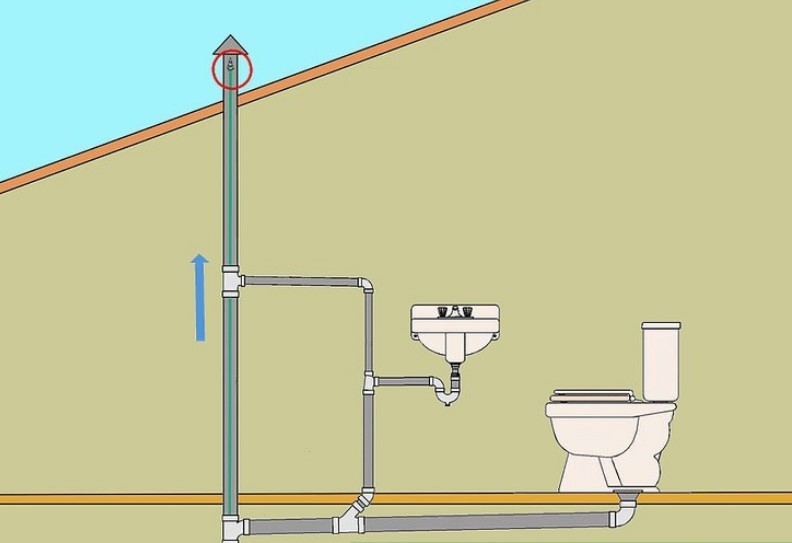Important Advantages for Proper Ventilation in Plumbing Systems
Important Advantages for Proper Ventilation in Plumbing Systems
Blog Article
Here down the page you can find a bunch of reliable information when it comes to The Upsides of Proper Ventilation in Plumbing Design.

Appropriate ventilation in plumbing systems is often neglected, yet it is essential for keeping the functionality and security of your home's plumbing. Ventilation aids control air pressure, protect against the buildup of harmful gases, and guarantee the reliable removal of waste. In this guide, we will check out the value of correct plumbing air flow, just how it works, and the advantages it offers your pipes system.
Understanding Air Flow in Plumbing
Ventilation in plumbing describes the network of pipes that enable air to move with the drain system. These vents serve multiple functions, including regulating air pressure within the pipelines, stopping drain gases from entering the home, and assisting in the smooth circulation of wastewater.
Exactly How Ventilation Works in Plumbing Equipments
Atmospheric Pressure Law
Correct air flow preserves well balanced atmospheric pressure within the pipes system. When water streams through pipes, it displaces air. Without sufficient ventilation, this displacement can develop negative stress, resulting in reduce drains pipes or siphoning of water from catches, which can trigger unpleasant odors to permeate right into the home.
Protecting Against Sewer Gas Buildup
One of the most important features of plumbing vents is to stop sewage system gases, such as methane and hydrogen sulfide, from collecting within the home. These gases can present serious health dangers and are extremely flammable. Vent pipelines enable these gases to leave safely outside.
Helping in Waste Removal
Air flow aids in the effective removal of wastewater by stopping airlocks in the water drainage system. When air can move easily via the vents, it permits water and waste to move smoothly through the pipelines, reducing the threat of obstructions and backups.
Types of Plumbing Vents
Main Stack Vent
The primary pile air vent, also known as the vent stack, is the primary vent in a plumbing system. It extends from the primary drainpipe align through the roof covering, enabling gases to escape and fresh air to enter the system.
Branch Vent
Branch vents link to the main pile air vent and serve private components, such as sinks, bathrooms, and showers. These vents make sure that each fixture has ample air flow to operate appropriately.
Air Admittance Shutoff (AAV).
An Air Admittance Valve (AAV) is a one-way valve that permits air to get in the plumbing system without the demand for a traditional air vent pipeline prolonging through the roofing system. AAVs are frequently utilized in restorations or locations where installing a typical vent is not practical.
Signs of Poor Ventilation in Plumbing.
Slow Draining Fixtures.
If your sinks, tubs, or toilets are draining pipes gradually, it could be an indication of poor air flow. Inadequate air flow can produce a vacuum effect, making it difficult for water to drain appropriately.
Gurgling Sounds.
Gurgling noises coming from drains are commonly a result of air being sucked through water catches because of unfavorable pressure in the pipes. This is a clear sign of inadequate ventilation.
Undesirable Odors.
Sewage system smells inside your home are a warning that your pipes system is not correctly ventilated. This could imply that sewage system gases are not being effectively vented outside, bring about possibly dangerous problems.
Usual Air Flow Mistakes.
Poor Vent Sizing.
Using small vent pipelines can bring about inadequate air circulation and stress inequalities in the system. It's vital to utilize vents that satisfy the particular requirements of your plumbing system.
Improper Vent Positioning.
Placing vents as well much from the fixtures they serve can decrease their effectiveness. Proper placement guarantees that air can flow easily and efficiently through the system.
Ignoring Code Needs.
Building codes offer certain standards for pipes ventilation. Neglecting these codes can cause a system that falls short to function correctly and might lead to costly repair services or health hazards.
Advantages of Appropriate Air Flow.
Improved System Performance.
Appropriately ventilated plumbing systems operate extra efficiently, with less blockages, faster draining, and much less pressure on the pipes. This effectiveness prolongs the life-span of the plumbing system.
Improved Air Quality.
By protecting against sewage system gases from entering your home, appropriate ventilation contributes to much better interior air high quality, making your living environment healthier and much more comfortable.
Preventing Water Damages.
Appropriate ventilation helps stop water from being siphoned out of catches, which can result in sewer gases going into the home and causing water damages with time.
Steps to Guarantee Appropriate Ventilation.
Consulting Plumbing Codes.
Always seek advice from regional plumbing codes when making or customizing your pipes system. These codes supply the required guidelines for appropriate venting and guarantee your system satisfies safety and security requirements.
Normal Evaluation and Maintenance.
Regular inspections can assist determine potential ventilation issues prior to they come to be major issues. Maintenance tasks, such as cleaning air vent pipelines and checking for blockages, are vital for maintaining the system in good working order.
Expert Setup.
For new installations or significant adjustments, it's important to employ an expert plumbing professional. They have the proficiency to make certain the air flow system is properly developed and installed according to code.
Verdict.
Correct air flow is an important component of any pipes system, making sure that it operates successfully and safely. By comprehending the relevance of air flow, acknowledging the signs of poor ventilation, and taking actions to keep your system, you can protect against pricey concerns and safeguard your home's air top quality.
4 Things You Should Know About Your Plumbing Vents
What Plumbing Vents Are
Also called a vent stack, a plumbing vent is a vertical pipe attached to your drain line that runs through your roof. The plumbing vent pipe, or plumbing air vent, removes gas and odors from your plumbing system and allows fresh air to enter the pipes, helping the water to flow out of the drain pipes.
What Plumbing Vents Do
Plumbing vents have two basic functions. One of which is to allow unpleasant smelling wastewater and sewer gasses to escape your plumbing system instead of entering your home. Plumbing vent pipes are typically located on roofs, away from windows, to ensure the fumes exit the home completely.
The other function of the plumbing vent is to move fresh air into your plumbing system. This helps move water through every plumbing fixture in your house, like toilets and sink drains. Think of the way in which you need to let a little air into the bottle as you pour soda in order to make the drink flow smoothly.
Different Types of Plumbing Vents
True vent: This is the most common vent option. In simplest terms, a true vent is a vertical pipe attached to your drain line that exits through the roof. They often function as the main vent that other fixtures can connect to. Re-vent pipe or auxiliary vent: Attached to the drain line near specific plumbing fixtures, re-vent pipes run up and over to connect to the main vent. Common vent: Two plumbing fixtures installed on opposite sides of a wall are typically tied into the vent stack using something known as a sanitary cross. Wet vent: This venting option operates as a drain pipe and a vent at the same time. Wet vent drainage systems drain water from one fixture while venting the air from another. Although they’ve been used for over 100 years, wet vent systems have only recently been added to the plumbing code in many areas. If you’re planning on installing one in a bathroom remodel, make sure you check your local code prior to construction. Loop vent: For free-standing fixtures like kitchen island sinks, loop vents are ideal. These vent pipes run under the floor, rise from the P-trap, and create a loop inside the cabinet sink. Air admittance valve: An AAV is a one-way mechanical valve typically installed at the site of the plumbing fixture. AAVs allow venting to occur without having to tie into a larger venting system. They’re ideal for venting fixtures where you aren’t able to easily connect to an existing vent system. Common Plumbing Vent Issues
Although vent pipes typically don’t have water flowing through them, they’re still subject to many typical plumbing issues. For example, clogs are one of the most common problems associated with sewer vent pipes. If your vent pipe gets clogged, all of your plumbing fixtures tied into the vent stack will be affected.
A sink with a slow drain that bubbles and gurgles or a strong sewage smell around your toilet are both indicators that your toilet vent pipe is clogged. Because most vent pipes exit through the roof, old leaves, twigs or even a bird’s nest could be clogging the pipe.
Clogs in your vent pipe system cause a buildup of negative pressure, meaning that water won’t be able to flow out of your home very well. It’s similar to putting your finger over the opening of a straw to trap water inside. When you remove your finger, the water is able to flow out of the straw.
If you suspect you have any blockage in your vent, make sure you have a professional come examine the situation. Left unchecked, a blocked air vent can lead to other costly repairs, like leaks and sediment buildup.
Under Pressure
Pipe vents are essential aspects of a home’s plumbing system. Owning a home means learning about all sorts of things you never put much thought into before. But by understanding as much as you can about the important systems of your home, you can keep those budgets intact and those anxiety levels low.
https://www.homeserve.com/en-us/blog/home-improvement/plumbing-vents/

We were made aware of that article on The Upsides of Proper Ventilation in Plumbing Design through someone on a different web blog. Those who appreciated our blog post please remember to share it. Thanks so much for taking the time to read it.
Get Your Estimate Now Report this page